We need an environmental research and training institute

Since its independence 53 years ago, Bangladesh has made commendable strides in economic growth and agricultural production. Our country is regarded as a model of disaster management and increasingly as a model of adaptation. However, rising pressure from poverty, though it is declining, and rapid economic growth tend to wreak havoc on limited environmental resources. Moreover, the influx of more than a million Rohingya refugees has added additional economic, social, and environmental pressure on the country.
Paradoxically, Bangladesh is also regarded by many as a test case of sustainable development. It is a country with an area 66 times smaller than the US, and is home to a population that's almost exactly half of the US population. Sandwiched between the Himalayas in the north and the Bay of Bengal in the south, Bangladesh can be considered as ground zero for vulnerability to increasing impacts of climate change. Recurring climate disasters like floods, cyclones, rise in the sea level and salinity, and the entailing degradation of land and biodiversity keep causing huge losses and damages.
Addressing these challenges effectively warrants the need for some solid and sustainable thinking. If we look at past development trajectories, industrial countries travelled the path of the environmental Kuznets curve, where economic growth and rising income were accompanied by increasing pollution. Then, the growing demand for better environmental quality prompted actions to clean the mess. The 1987 Brundtland Commission report titled Our Common Future represents this line of thinking with some modifications, such as less material and energy-intensive growth but with a focus on the needs of the poor.
The second thinking argues that ignoring the environmental soundness of growth, even if this leads to short-term gains, will undermine long-term development and the quality of citizens' lives. This thinking is promoted by the global development agencies. This is particularly true for countries like Bangladesh with a limited natural resource base and facing increasing degradation.
Again, the pathways that the Least Developed Countries (LDCs) have traversed to graduate to the Developing Country status can be synthesised into three trajectories.The first pathway has been rapid economic growth, based mainly on natural resource exploitation. The second one, related to achieving rapid growth, is based on a combination of tourism and natural resources—the path taken mostly by some small island LDCs. The third pathway is characterised by increased investment in the development of human capital, knowledge economy, and structural transformation. This engendered a move away from low-yield agriculture into areas with higher productivity such as the manufacturing and service sectors, leading to more diversified economies.
For Bangladesh, this third pathway can be the game changer in light of its huge potential for demographic dividends through investments in human capital and strengthening the knowledge economy—the foundation of a rising middle-income country. However, Bangladesh is still unable to reap significant benefits owing to the meagre investment in education, research and skill development, compared to other developing countries. Investments from the Bangladesh Climate Change Trust Fund in research, capacity-building and knowledge management were fairly measly compared to allocations for hard infrastructure development.
Naturally, in a country like Bangladesh, where an imbalance exists between the population and the available resources, the importance of a knowledge-based policy management and implementation framework cannot be overemphasised. Therefore, to ensure environmental sustainability in Bangladesh, an area which is still weak and fledgling, evidence-based policy research and analysis must play a greater role, along with building a strong bridge between the government and the research and education sectors.
Here, experiences of environmental research and training in other countries shows that the majority of such think tanks are based in developed countries. Developing countries, therefore, remain weak in ensuring a strong research and skill development infrastructure. Some countries like the Philippines, Nigeria, Saudi Arabia and India have a range of environmental think tanks, some of which have been established under government initiatives. However, they are run as semi-government or autonomous organisations.
While we also have such examples in Bangladesh, they are not environment-focused. The Bangladesh Institute of International and Strategic Studies (BIISS) and the Bangladesh Institute of Development Studies (BIDS) run as autonomous bodies, with a high-level board of governors. Additionally, there is the Bangladesh Forestry Research Institute (BFRI), which exclusively focuses on silviculture and forest management research. Furthermore, the 13 institutes under the National Agricultural Research System (NARS) have significantly contributed to establishing Bangladesh as a model of agricultural development, with excellent innovations in a number of areas. Meanwhile, the Delta Plan 2100 plans to create research spaces to carry forward its effective implementation.
The above discussion gives us a clear message: a research-led knowledge economy and a rich human capital base through constant training can ensure positive links between environment and development, minimising growth-induced negative impacts. The limited natural resource base in Bangladesh can be compensated through developing a resource-efficient economic system. As a historically resource-constrained economy, the rise of Japan as an economic power since the Meiji revolution is a good example. This kind of smart development warrants mastering of skills and abilities that can connect the dots across the wide spectrum of environment and development.
Thus, establishing an environmental research and training institute as the apex body for policy research, knowledge management and skill development can fill a vital gap in Bangladesh. The proposed entity under a high level independent board must be allowed autonomy, and may be financed either via donor-supported projects or some seed money from the Ministry of Environment, Forest and Climate Change.
Mizan R Khan is a board member at Scientific Council of COP29 Presidency, visiting scholar at Brown University, and technical lead at LDC Universities Consortium on Climate Change (LUCCC).
Views expressed in this article are the author's own.
Follow The Daily Star Opinion on Facebook for the latest opinions, commentaries and analyses by experts and professionals. To contribute your article or letter to The Daily Star Opinion, see our guidelines for submission.

 For all latest news, follow The Daily Star's Google News channel.
For all latest news, follow The Daily Star's Google News channel. 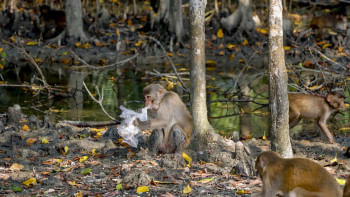
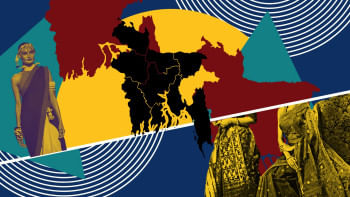



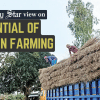
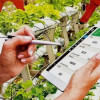



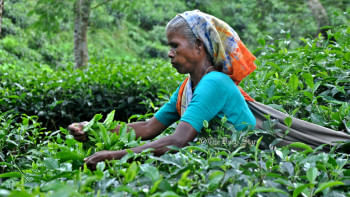
Comments